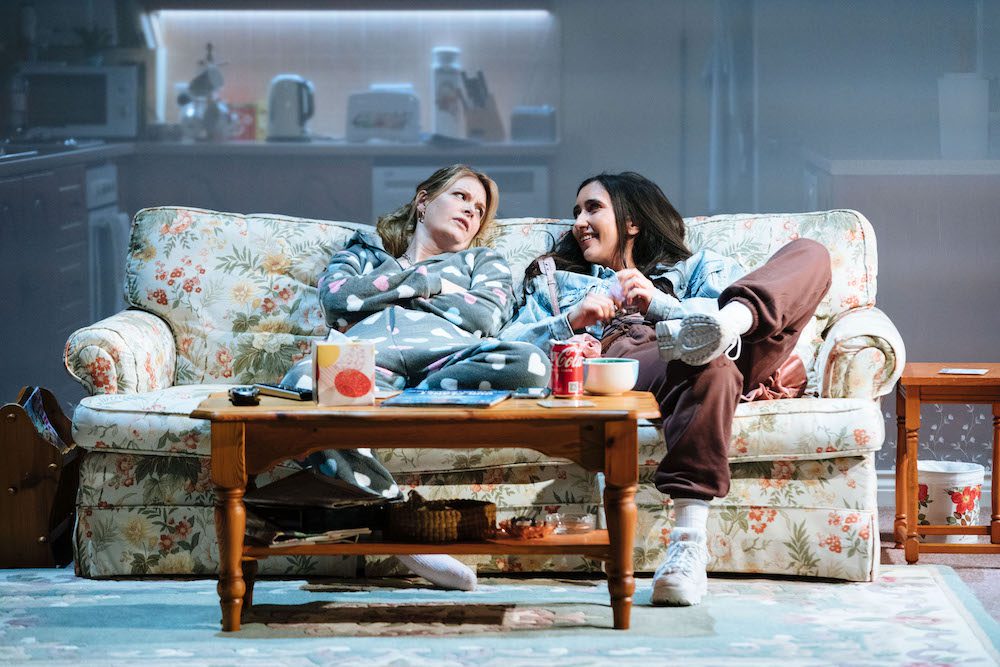Lots about Dixon and Daughters is ever so slightly off. That is both it’s strength and it weakness.
Take it’s length, for example. At 90 minutes it is slightly too long to feel comfortable in one sitting and slightly too short to justify the inclusion (which there wasn’t) of an interval.
Or the cast which felt like it had perhaps one character too many, and yet I wouldn’t be able to single any one actor out for exclusion.
This slight edge of frenetic busyness – of possibly trying to do slightly too much at once because it’s all so bloody important is true of the piece as a whole. There are dark themes explored that cut through the heart of the play, but there are just so many threads that it becomes something of a jumble – exemplified at times by the cast even speaking over each other – a choice I wasn’t sure was deliberate as it happened more than once, but not often enough to feel like an active choice.
At the start of the drama, Mary (Brid Brennan) arrives home from a short time in prison, accompanied by her youngest daughter Bernie (Liz White). Mary is not in a good mood. But as we discover throughout the play, Mary is never really in a good mood. She – as with all the Dixon family – is haunted by a very particular ghost and a very particular guilt.
This is a play about families and familial abuse. Both the horrifying – it expires that the reason Mary has been in prison was for lying in court to protect an abusive husband – and the mundane abuses that all families inflict on each other. The words we shouldn’t say, but can’t hold back in moments of anger. Not always because we mean them (though sometimes they can expose a deeper truth) but because no one knows how to wound each other like our nearest and dearest.
Most of the play is taken up with Mary and her daughters – the biological sisters Bernie and Julie (Andrea Lowe) and their older half-sister from Brid’s husband’s previous relationship, the newly renamed Briana. There is also the insertion of Leigh (Posy Sterling) who Mary seems to have taken under her wing as an almost surrogate while in prison and making up the Dixon dynamic is student daughter of Bernie Ella (Yazmin Rayant).
This is not, by any means, a functional family. They argue constantly and the different sides of any argument ebb and flow. Sides are taken and swapped throughout – and there is never truly a moment of harmony – even when there is a moment of revelation and resolution.
This is a play deeply informed by trauma. Clean Break – the production company – are a superb organisation that do enormous amounts to support through the dramatic arts women with lived experience of the criminal justice system (DISCLAIMER: I have spent some time with the organisation as a catering volunteer). the trauma that this family has experienced figuratively and at times, I think we are meant to think literally haunts the house – all of which is shown on the stage. However, sometimes the trauma of the characters is released in uncontrolled bursts of rage and emotion. This feels true to the characters, but also a slightly too true description of the writing and direction. The play needed slightly more of an anchor to allow the different threads to eventually all pull in the same direction.
There is much that is true and honest and powerful in Dixon and Daughters. I could not help but be moved to anger and to tears by the themes contained and their, at times, powerful depictions. But while the black and white elements of the play were deeply powerful, they could have done with finding the calm at the eye of the storm and offering a few more shades of grey.

